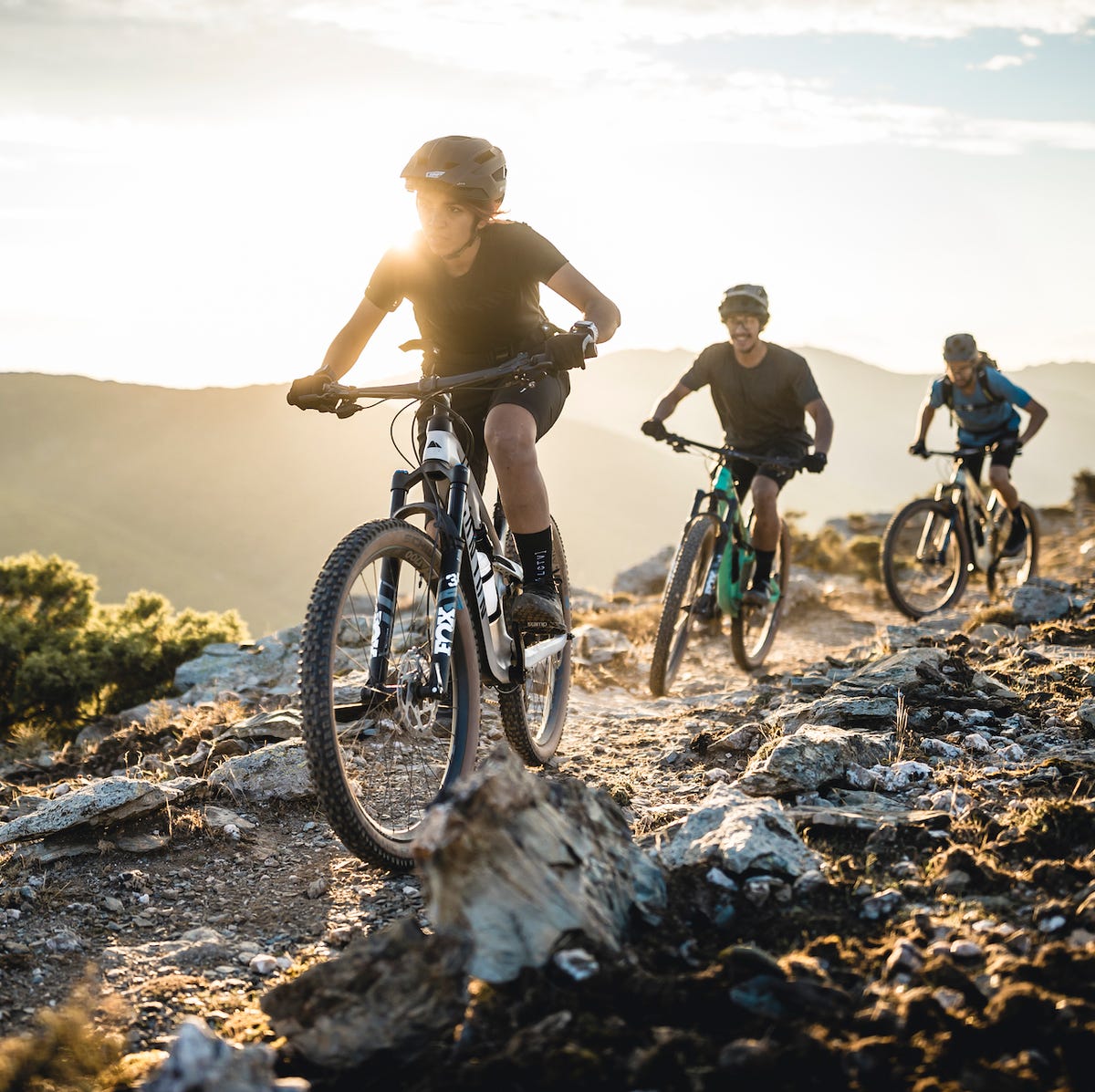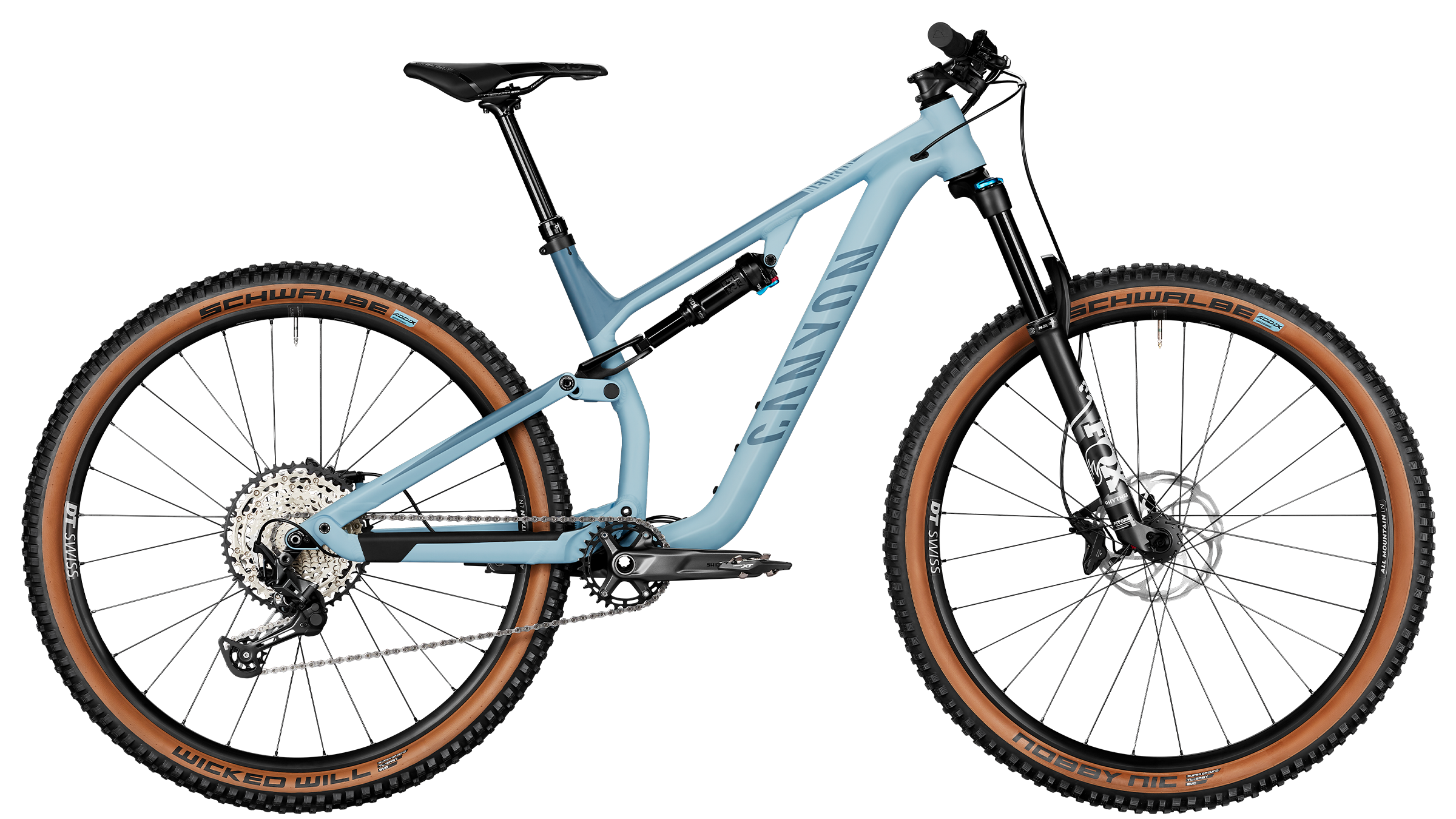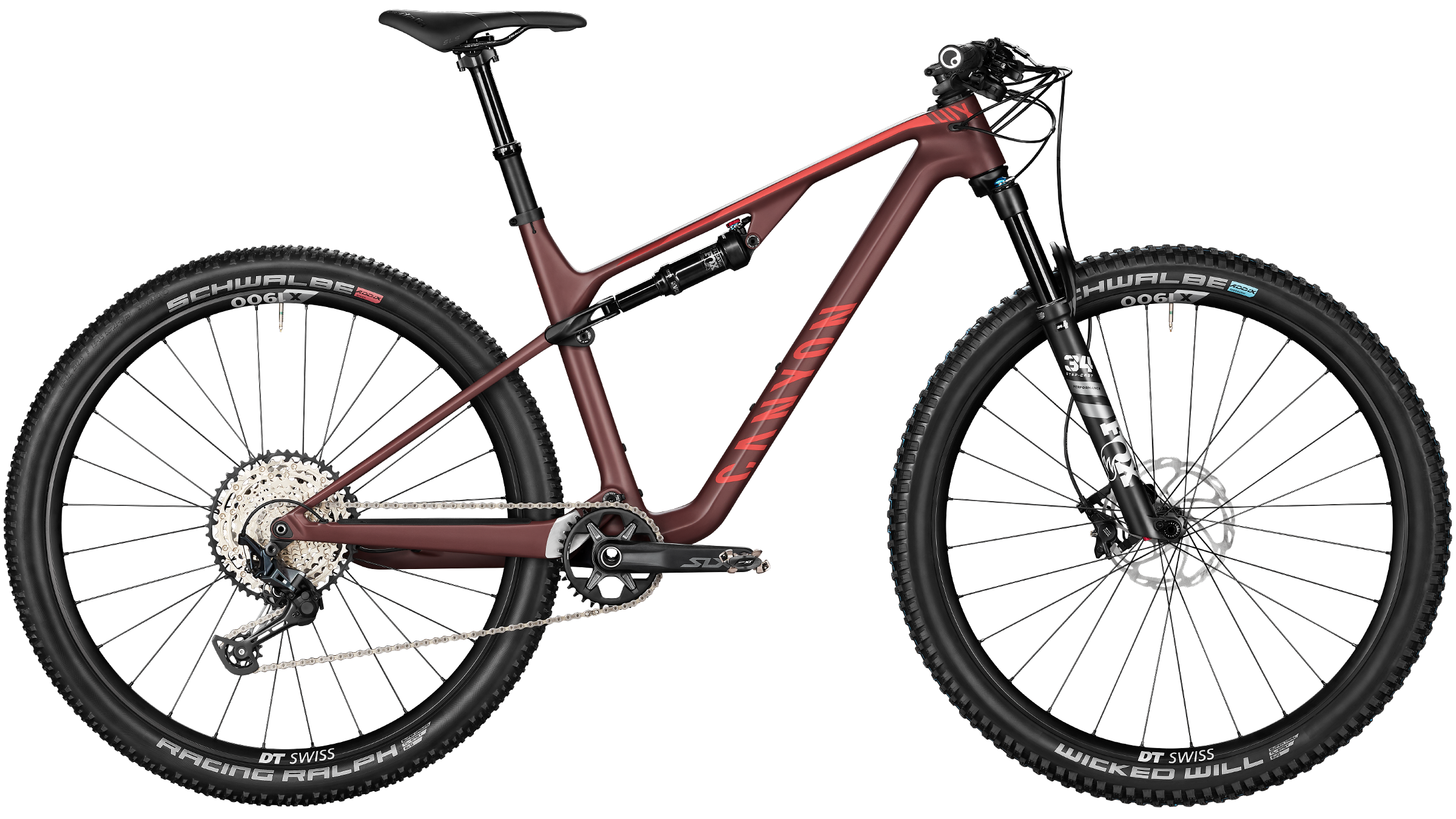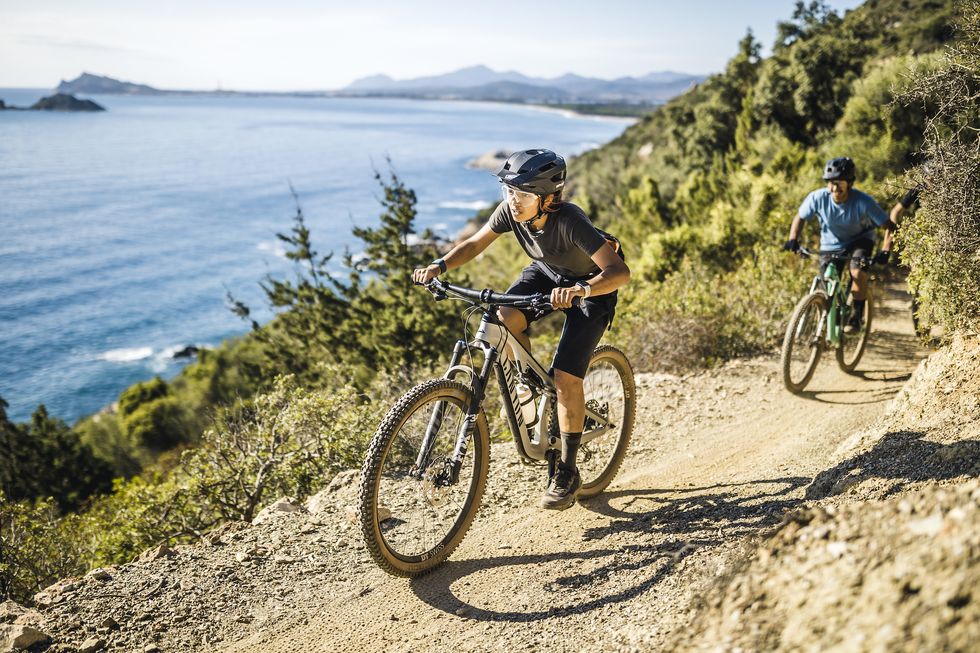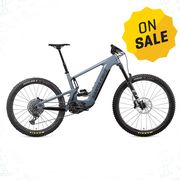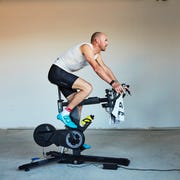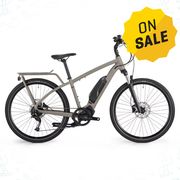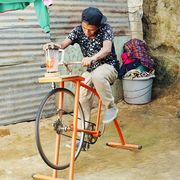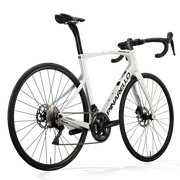It’s often said that if you can walk, you can snowshoe. Turns out, the same applies to riding your bike off-road. “Mountain Biking sometimes has a reputation of being scary and dangerous, but the truth is, with a little suspension and bigger tires anybody who’s confident riding a bike on pavement can quickly find confidence on the trails,” says Ryan Petry, a professional mountain biker from Boulder, Colorado. That said, as with any physically demanding sport, you should possess a baseline level of aerobic fitness before you hop on the saddle and tackle rough terrain, warns Peter Stetina, a professional road cyclist turned elite-level gravel racer based in Santa Rosa, California.
Beyond that, as long as you have a dependable bike and some general technical skills on two wheels, you should be able to get into mountain biking without a hitch. Below, our experts cover everything you need to go from beginner to seasoned trail rider—including what type of bike to get, what terrain to ride, and how to sharpen your skills to stay safe and have a hell of a lot of fun.
Choose Your Mountain Bike
For obvious reasons, finding a bike should be your top priority, and the first factor to consider is budget. Mountain bikes range from hundreds of dollars to well into the thousands, and knowing how much you want to spend will help you narrow your options.
“When starting your bike search, focus on finding a bike that fits you properly with reliable components,” says Petry. “Use this bike to build skills, fitness, and confidence so that if you choose to upgrade down the line, you’re ready for the increased capabilities of more expensive bikes.” Canyon is a great place to find models in virtually every price point, serving riders of all levels.
Generally speaking, the higher the price, the lighter and more efficient the bike will be. “Carbon fiber bike frames are the lightest and offer the best ride quality, but are easier to break in a bad crash,” Stetina says. Lighter also means faster, which for a beginner shouldn’t be a top priority. A less expensive, if slightly heavier, bike in the 30-pound range should suit a newbie well.
Before you make a selection, you should take into account what type of riding you want to do. Are you looking for a cardio workout focused mainly on flats and climbs? Or do you prefer speed and just want to ride downhill after hitching a ride up on a chairlift? This is where you’ll have to make a decision about suspension—the shock absorbers on a bike that provide greater traction, control, and comfort. Most bikes come equipped with front suspension, but if the trails you want to ride have lots of roots and rocks, consider upgrading to a full suspension, which means the bike has shock absorbers in both the front and rear.
Just make sure you get the right size bike for your body, as this can make all the difference in your comfort and bike handling; Canyon has an easy-to-use online tool called the Perfect Positioning System to help you determine the right size. All you have to do is input your height and inner leg length (inseam) under “Find Your Size” next to the bike you’re looking at on the Canyon website. From those two data points, you’ll get an immediate recommendation on what size bike to choose—S, M, L, or XL.
Once you’ve picked a bike in the right size and style, make sure you have the basics for the trail. “You don’t need all the fanciest equipment to enjoy riding a bike, but you do need a few things,” says Kathy Pruitt, a professional mountain bike racer from Park City, Utah. “A properly fitted helmet, a pair of either flat skate-style shoes or clip-in bike shoes, and a can-do attitude are must-haves.” Other helpful accessories include a pump or CO2 inflator, spare tube and tire lever, saddle bag, water bottle, and bottle cage.
Find a Trail
When you have your bike and accessories, you’re ready to ride. Ask your local bike shop for trail suggestions or check reviews online. Mountain biking trails are usually color-coded like ski hills, from green to double-black-diamond. “Greens are pretty basic dirt with an occasional obstacle while, blues, which are my favorite, are still somewhat tame but can be fast in a race scenario and have a few features to keep them interesting,” Stetina says. Black diamonds, however, require excellent bike handling skills, which is why he advises progressing to those over time.
Although you can find instructors to help speed up your learning curve, nothing beats time on the trail to hone your riding skills and get comfortable on the bike. “Think of a trail like a puzzle or maze where you have to get around the rocks as smoothly as possible—it’s a game,” Stetina says.
Ride Safely
Thinking of it as a game doesn’t mean you should just jump onto a trail and figure it out with no guidance—that wouldn’t be safe. For first-time mountain bikers, Petry, Pruitt, and Stetina offer the following riding tips:
- Start slowly. Until you get the feel for mountain biking, start with an easy trail, especially if you’re new to cycling in general. Check the elevation gain, too. If you’re in good shape, you can probably hit a trail with a few climbs; if you’re not, look for flatter trails. Nervous about getting on a real trail? Ride around a grassy park to get used to slow-speed turning and quick braking.
- Look where you want to go. “You’ll naturally gravitate to where your eyes are focusing,” Stetina says. In other words, don’t look at the rock in your way. Instead, look at the line you want to take and recognize the rock, root, or obstacle only in your peripheral vision.
- Practice using the front brake. “Many beginners worry about using the front brake in fear of flying over the bars,” says Petry. “However, 70 percent of braking power comes from the front brake, so if you want to be able to slow down fast you’ll need to become friends with the left brake lever, too.” When you need to slow down, get used to using both front and rear brakes; the better feel you develop for them, the safer you’ll be.
- Take a stand. When you’re riding over roots, rocks, or bumpy sections of the trail, it’s easy to get bounced around. To quell this, move into an athletic stance, standing on the pedals with your butt off the seat and arms and legs bent. “Learning to get out of the saddle when going over rough terrain is crucial to a smooth and safe ride,” Pruitt says. “If you stay planted on your seat, you’ll likely get bronco-bucked off your bike. Keep level pedals, a slight bend in the knees, and eyes forward when the trail gets rough.”
- Shift your weight back on the downhills. Heading downhill can seem daunting at first—unless you keep your weight back, hovering just above or behind the saddle without exaggerating and pulling on the handlebars. “While it’s important to keep your body weight back, keep in mind that if all your weight is on the rear wheel, your front brake won’t do its job,” Pruitt says. “When descending, stay slightly back, but also lower your body weight and keep a slight bend in your arms so you can still control the bike direction.”
- Accept that you’ll fall. At some point, you’ll hit the ground, and that’s okay. “It’s part of the process, and going out of your comfort zone can be rewarding as long as you minimize the risk,” Stetina says, adding that 99 percent of the time, if you’re wearing your helmet and other protective gear, you’ll wind up with only a few scrapes. “Riding a bike takes practice to be good,” Pruitt says. “Don’t be afraid to challenge yourself and fail from time to time. It’s all in the name of getting outside and having fun.” To make your landings as soft as possible and avoid serious injury, always put your safety first. When in doubt, moderate your speed, choose a less advanced trail with fewer downhills and rocks, avoid treacherous weather conditions, and never ride without a high-quality helmet.

